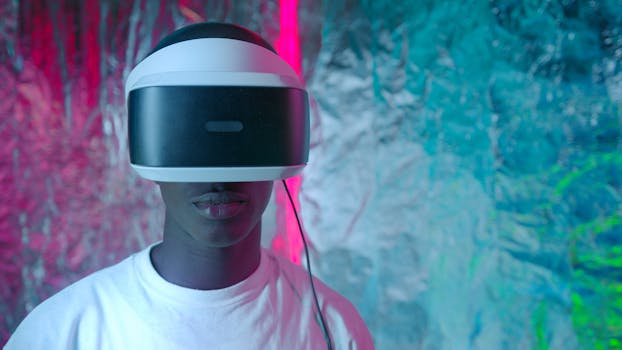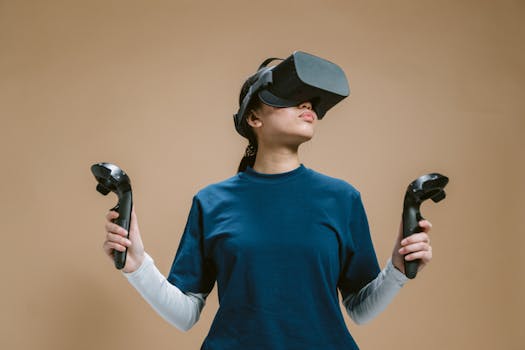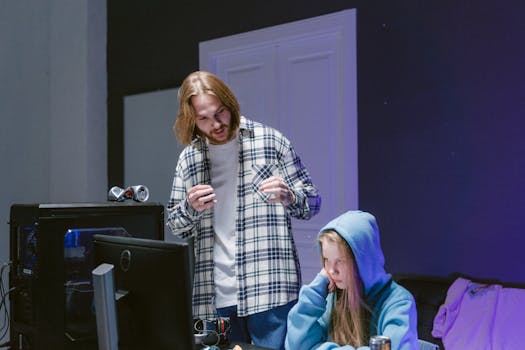
Virtual Realities: The Next Frontier in Human Connection
Virtual Realities: The Next Frontier in Human Connection is a rapidly growing field that is changing the way we interact with each other. Virtual reality (VR) and augmented reality (AR) are technologies that are being used to create immersive and interactive experiences that are transforming the way we connect with each other. From social media platforms to online gaming communities, virtual realities are providing new and innovative ways to build relationships and interact with others.
One of the key benefits of virtual realities is the ability to connect with others across geographical distances. With the use of VR and AR, people can now interact with each other in a more immersive and interactive way, regardless of their physical location. This is particularly beneficial for people who are isolated or have difficulty connecting with others in person. For example, people with disabilities or those living in remote areas can now connect with others and build relationships through virtual realities.
The Impact of Virtual Realities on Human Connection

The impact of virtual realities on human connection is significant. Virtual realities are providing new and innovative ways to interact and build relationships, and are changing the way we connect with each other. For example, social media platforms are using VR and AR to create immersive and interactive experiences that allow users to connect with each other in new and innovative ways. Online gaming communities are also using virtual realities to create immersive and interactive experiences that allow players to connect with each other and build relationships.
In addition to social media and online gaming, virtual realities are also being used in other areas such as education and healthcare. For example, virtual reality is being used in educational settings to create immersive and interactive learning experiences that allow students to connect with each other and with the material they are learning. In healthcare, virtual reality is being used to create immersive and interactive experiences that allow patients to connect with their healthcare providers and with others who are going through similar experiences.
The Future of Virtual Realities and Human Connection

The future of virtual realities and human connection is exciting and rapidly evolving. As technology continues to advance, we can expect to see even more innovative and immersive experiences that allow us to connect with each other in new and innovative ways. For example, the development of 5G networks is expected to enable even more seamless and immersive virtual reality experiences, allowing us to connect with each other in real-time and with even greater fidelity.
In conclusion, Virtual Realities: The Next Frontier in Human Connection is a rapidly growing field that is changing the way we interact with each other. With the use of VR and AR, people can now connect with each other in new and innovative ways, regardless of their physical location. As technology continues to advance, we can expect to see even more innovative and immersive experiences that allow us to connect with each other in new and innovative ways.
Virtual realities are not only changing the way we connect with each other, but also the way we perceive ourselves and our surroundings. The use of VR and AR is allowing us to experience new and innovative environments, and to interact with each other in ways that were previously not possible. As we move forward, it will be exciting to see how virtual realities continue to shape and transform the way we connect with each other and with the world around us.
VIRTUAL REALITY AND ITS EFFECT ON SOCIETY

Virtual reality is having a significant impact on society, and its effects are being felt in a variety of areas. One of the most notable effects of virtual reality is its ability to bring people together and provide a sense of community. Virtual reality is allowing people to connect with each other in new and innovative ways, and to build relationships that may not have been possible in the physical world.
Another significant effect of virtual reality is its ability to provide new and innovative ways to learn and educate. Virtual reality is being used in educational settings to create immersive and interactive learning experiences that allow students to connect with the material they are learning in a more engaging and effective way. This is particularly beneficial for students who are visual or kinesthetic learners, as virtual reality allows them to experience and interact with the material in a way that is tailored to their individual learning style.
In addition to its effects on social connections and education, virtual reality is also having a significant impact on the healthcare industry. Virtual reality is being used to create immersive and interactive experiences that allow patients to connect with their healthcare providers and with others who are going through similar experiences. This is particularly beneficial for patients who are undergoing treatment for mental health conditions such as anxiety or depression, as virtual reality allows them to experience and interact with their surroundings in a way that is tailored to their individual needs.
In conclusion, virtual realities are revolutionizing the way we connect with each other, and are having a significant impact on society. From social connections and education to healthcare and beyond, virtual realities are providing new and innovative ways to interact and build relationships. As technology continues to advance, we can expect to see even more innovative and immersive experiences that allow us to connect with each other in new and innovative ways.



